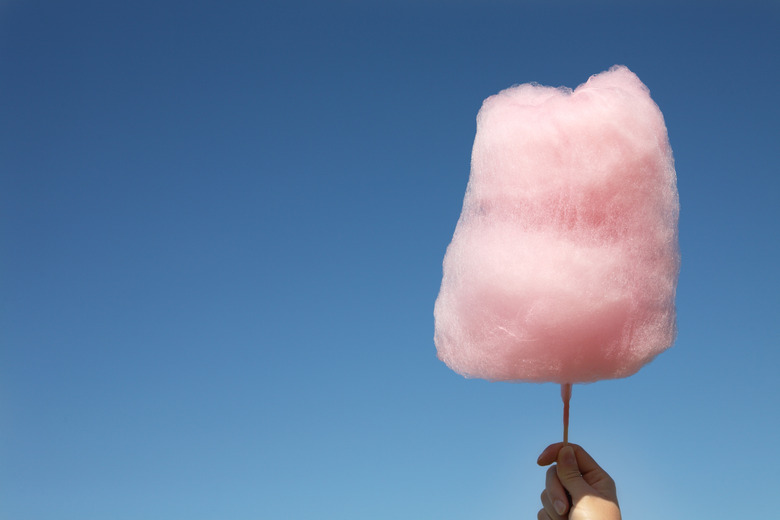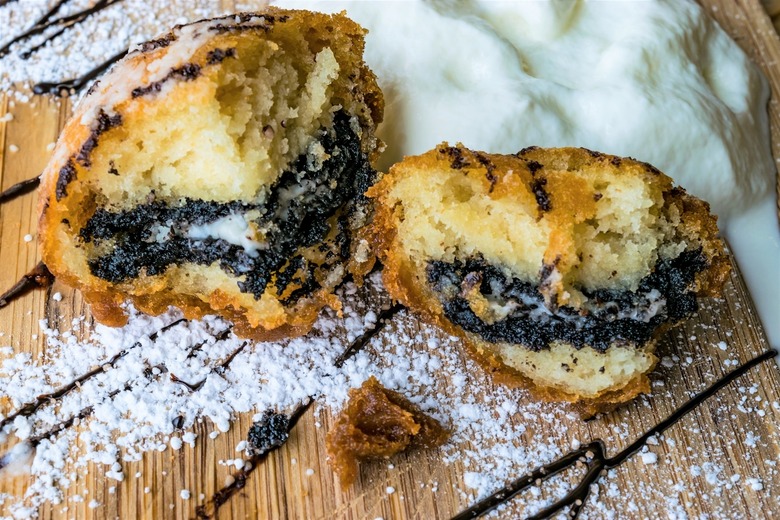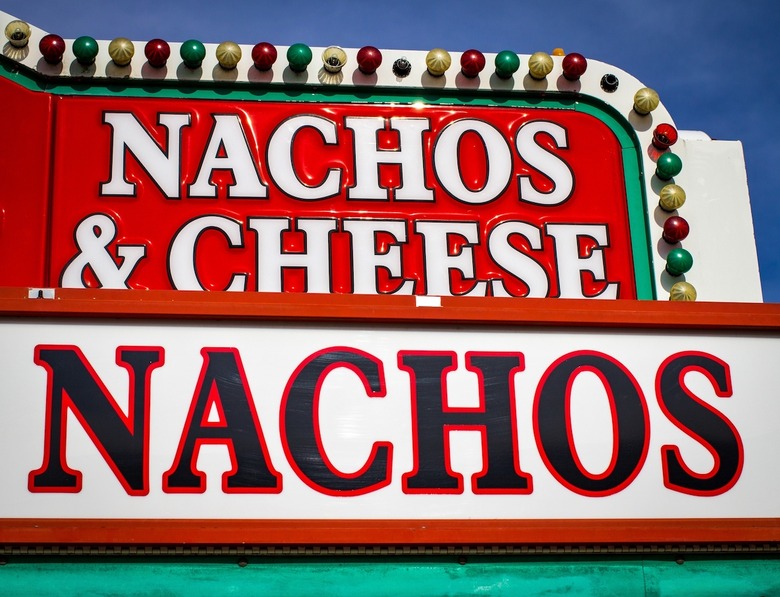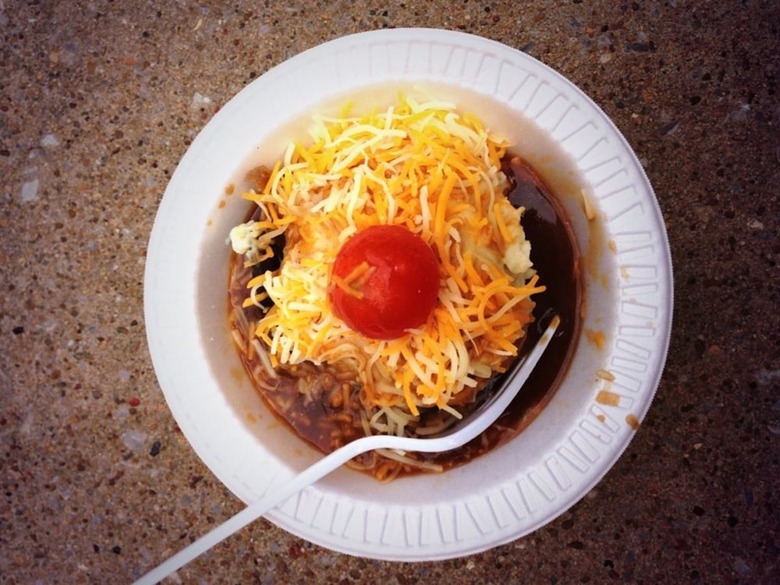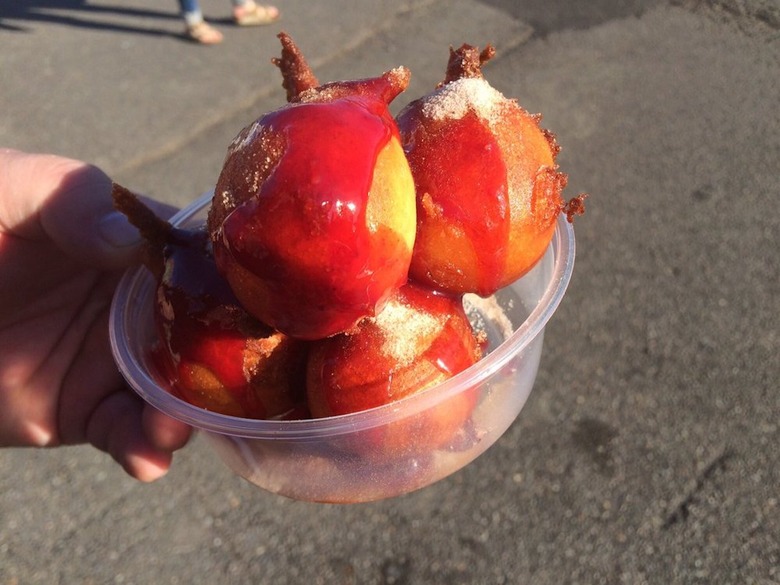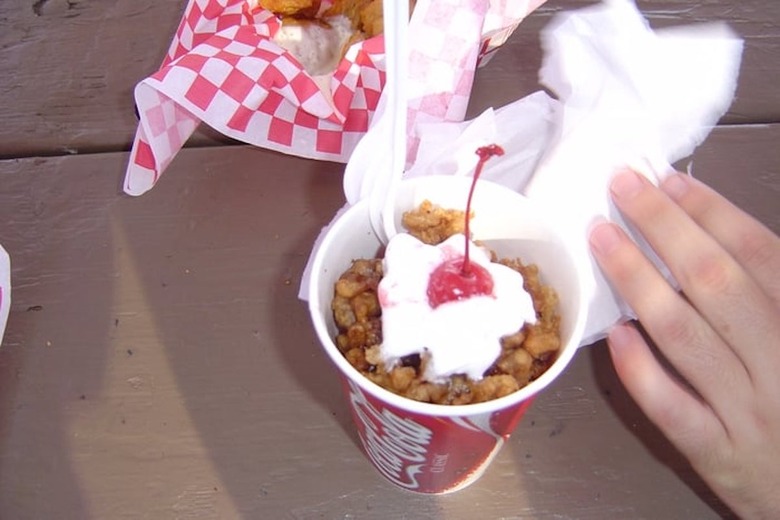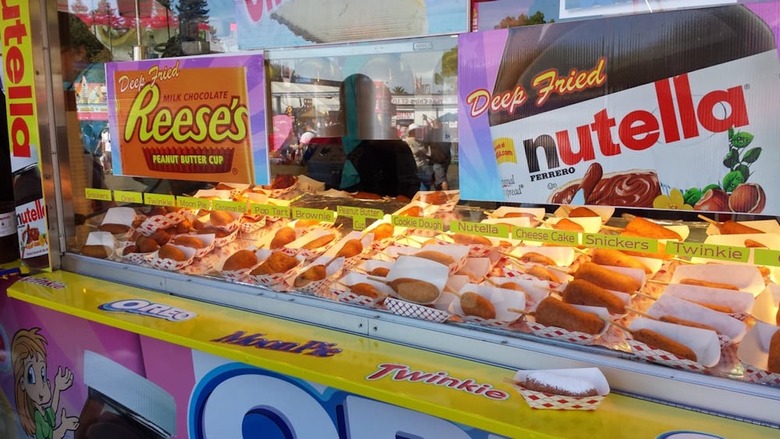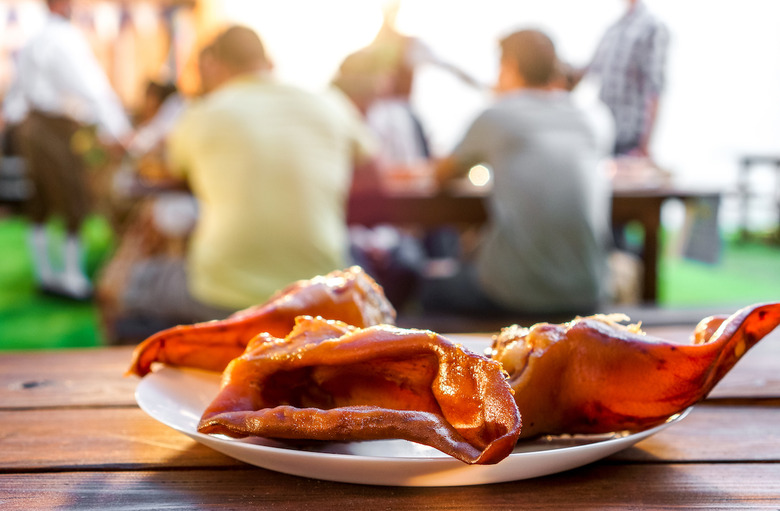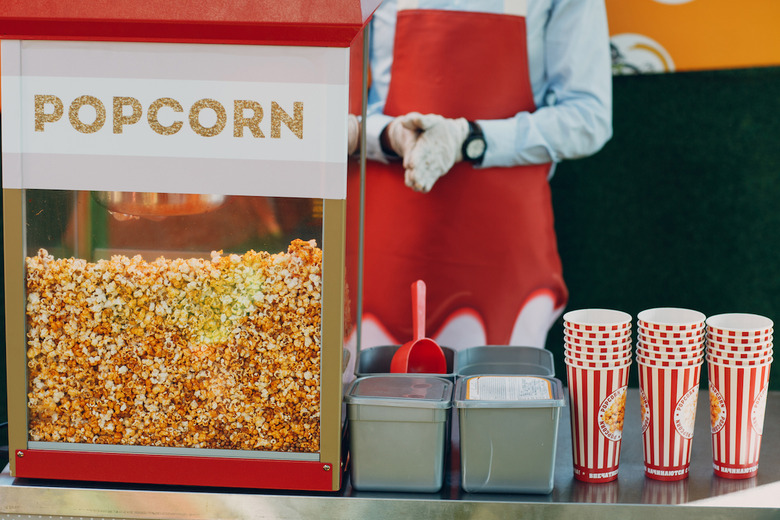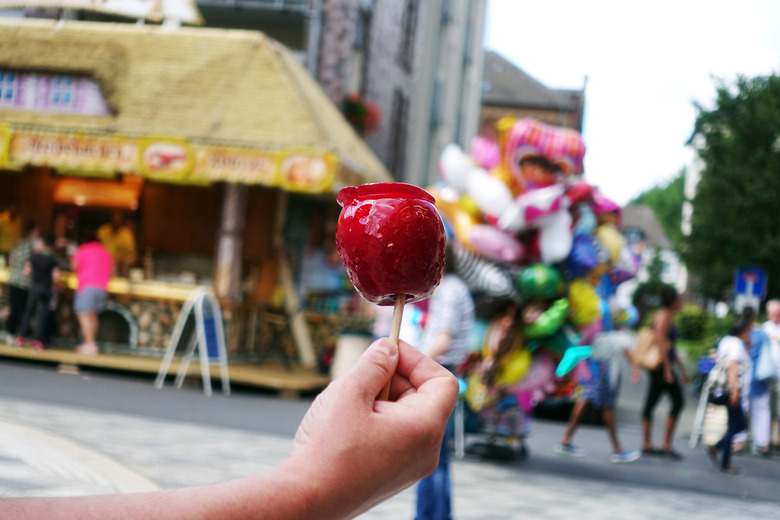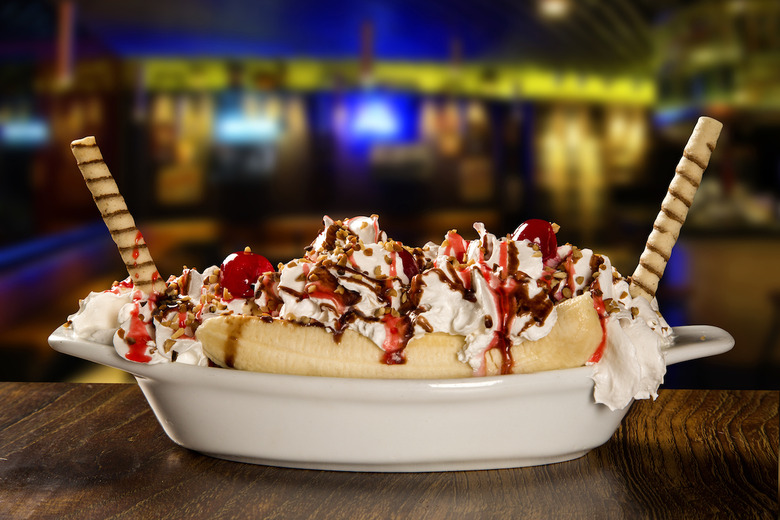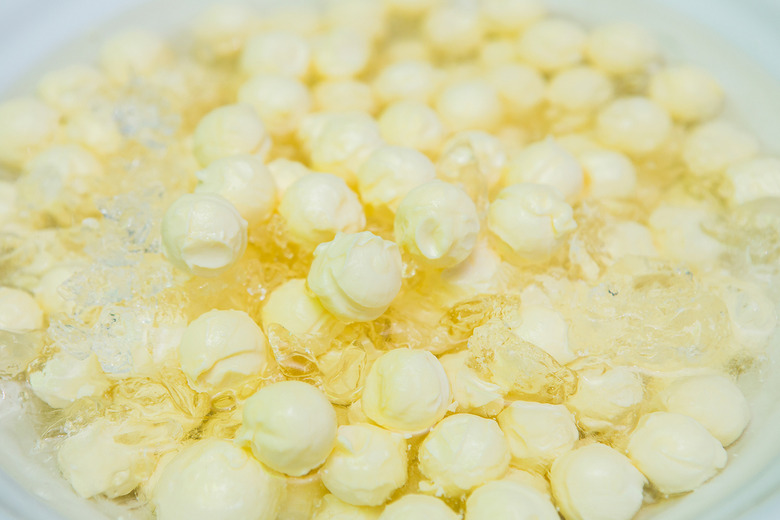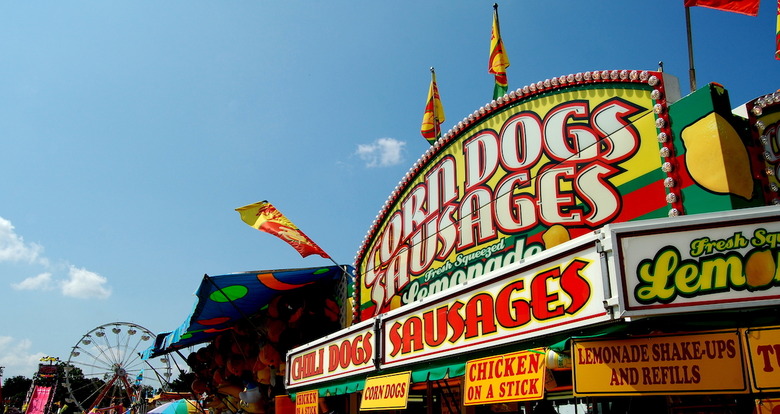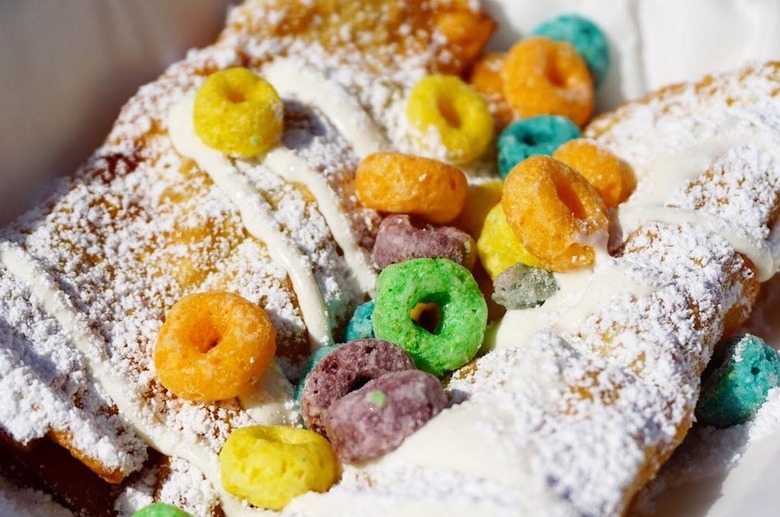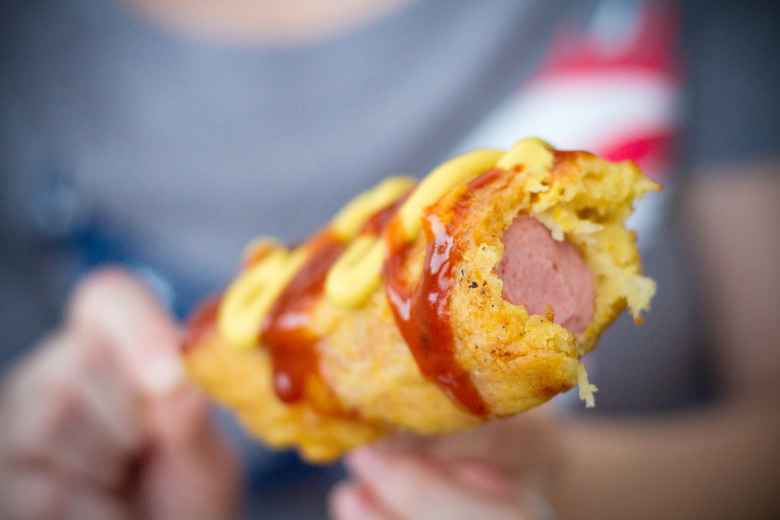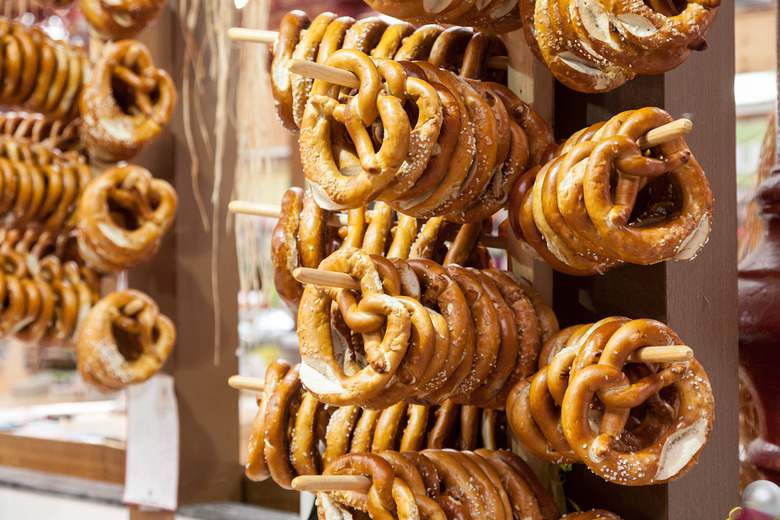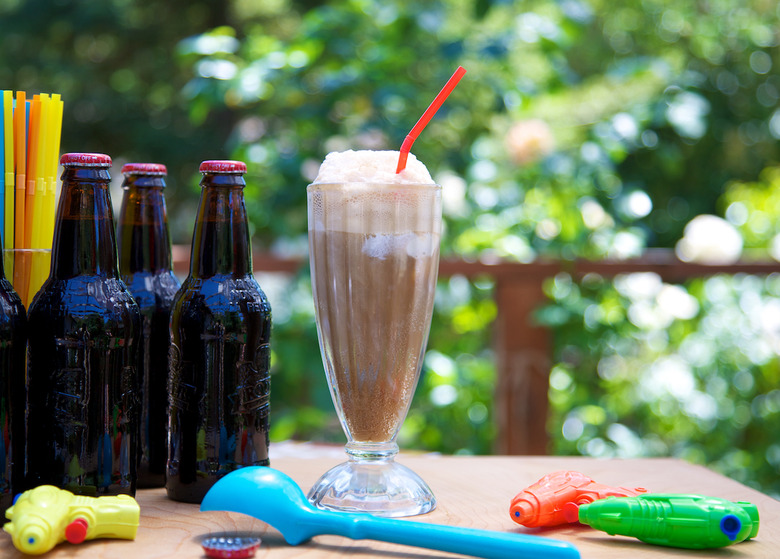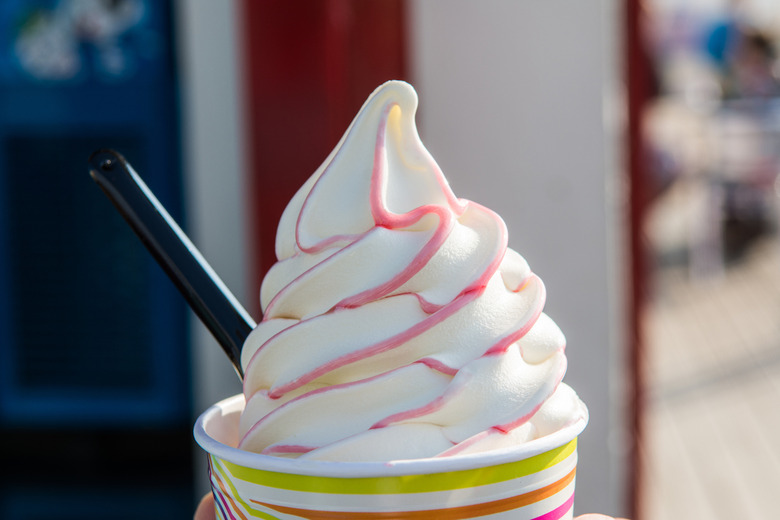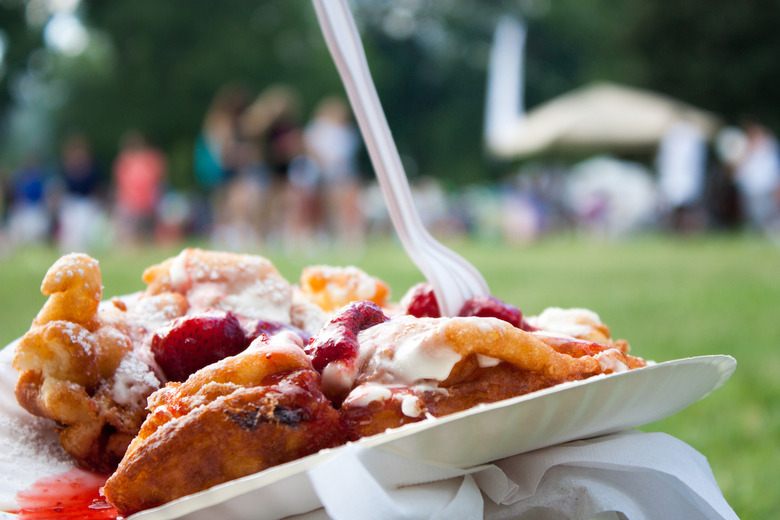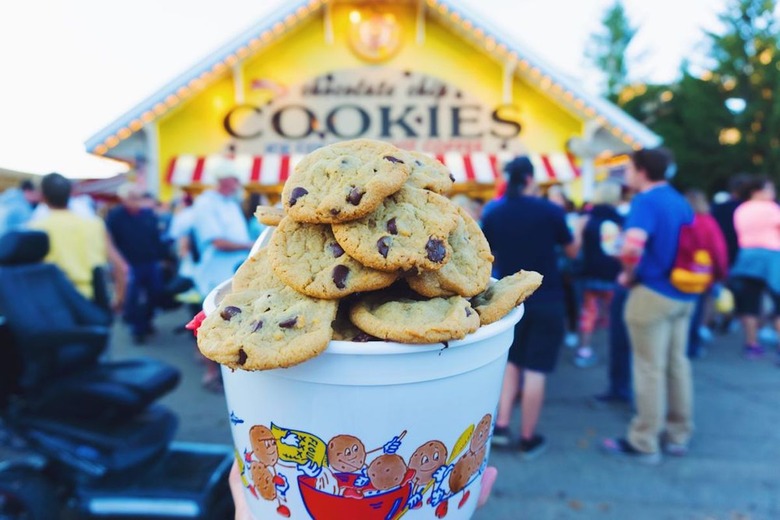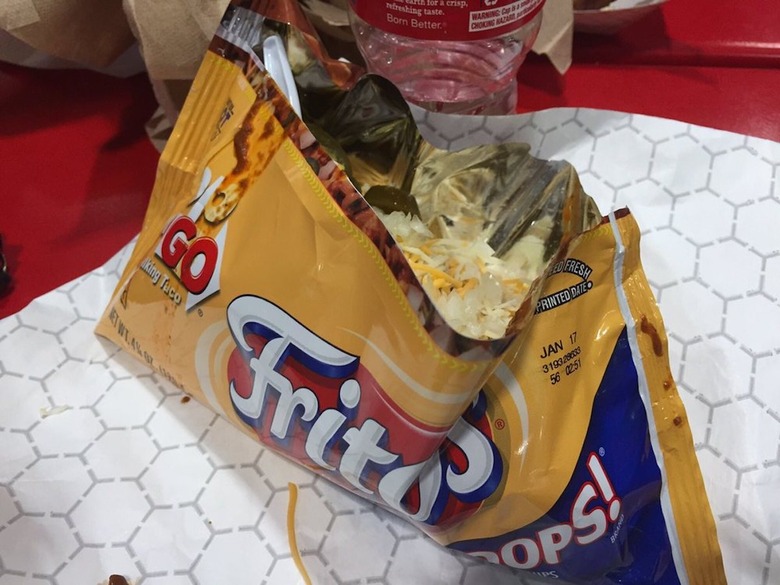State Fair Food: The Answers To All Your Burning Questions
Tilt-a-whirls are great and baby goats sure are cute, but the most popular thing about state fairs has got to be the food. Fairs have become havens for fun-to-eat foods through the years, all deep-fried, cheese-dipped, sugar-coated and served on a stick. But what's the difference between ice cream and custard? Or elephant ears and funnel cakes? Who was the first to sculpt butter anyway? We got to the bottom of these state fair food mysteries and more so you don't have to.
Why do we deep-fry Oreos?
Oreos are already great on their own, so who would think to fry one? None other than southern California's deep fry king, Charlie Boghosian. Invented in 2002, deep fried Oreos were Boghosian's second pass at fried desserts. (He had sold 10,000 fried Twinkies at the Los Angeles County Fair the year before.) To make the Oreos, Boghosian first dipped the cookies in pancake batter, deep-fried them, drizzled each with chocolate and coated them all in powdered sugar.
What is cotton candy?
Cotton candy is one childhood dessert you could never forget. But what is in it, and how is it made? Easily enough, air and colored sugar are all that's required to make cotton candy. First, flavored and colored sugar is poured into the center of a cotton candy machine. Soon, the machine's center warms up to 300 degrees, melting the sugar. The center spins, pushing the melted sugar through a screen that breaks the pieces up into a spidery, sweet web.
Where did nachos come from?
Nachos were created at a Mexican restaurant near the U.S. border and meant to please an American palette. The popular cheesy chip dish soon spread throughout all of Texas. In 1964, nachos made their state fair debut at the Texas State Fair, and that's just one of the many origin stories of our favorite Tex-Mex dishes.
What is a hot beef sundae?
You won't find a hot beef sundae on the menu of your favorite ice cream shop. While a hot beef sundae doesn't involve any ice cream, it is meant to mimic an ice cream sundae. When making a hot beef sundae, first please heaps of hot roast beef in a sundae bowl. Next, add a scoop of mashed potatoes, drizzle of gravy, sprinkle of shredded cheese and a cherry tomato on top.
How do you deep-fry butter without it melting?
Abel Gonzales Jr., affectionately called "Fried Jesus," undoubtedly deserves a mention during any talk of iconic Texan recipes. The multiple Big Tex Choice Award-winner invented deep fried butter for the 2009 Texas State Fair. The key to frying the butter before it melts is to whip it, freeze it, then encase it in a dough. The butter mostly melts into the doughy exterior once it's fried resulting in pretty much the butteriest bread you could possibly imagine.
How do you deep-fry Kool-Aid and Coca-Cola?
The method for frying beverages like Kool-Aid and Coca-Cola looks different than frying butter. Instead of coating frozen liquid in dough, vendors mix the drinks into a batter made of eggs, flour, salt and sugar. They then scoop the batter into the fryer and out comes flavored doughnut holes. And did you know Coca-Cola is a universally understood term? That's just one of many fun food facts you need to know.
What’s the craziest thing ever fried?
As for what fried dish is the craziest, that's up to you to answer. Allow us to mention some worthy and wild contenders: potato salad, bread pudding, a peanut butter and jelly sandwich, an entire burger stuffed with gooey mac and cheese and wrapped in bacon. Need we go on?
Are pig ears really, well, pig ears?
Elephant ears are surely not made of real elephant's ears, but pigs ears really are pigs' ears. As anyone who's ever had a pig ear knows, this pork product is delightfully crunchy and delicious. It may not look like your typical Easter ham, but this fair food is thinly cut and fried to absolute crispy perfection.
How does popcorn pop?
Inside each popcorn kernel is a small drop of water surrounded by soft starch. When the kernel is heated, the water turns to steam and the starch begins to turn gelatinous. Quickly, the kernel heats up to 347 degrees and the pressure inside reaches about 135 pounds per square inch. Finally the kernel bursts open, the steam is released and the starch spills over into that funky popcorn shape.
Why are candy apples red?
Candy apples are made from an apple coated with a layer of hardened sugar candy. Though this candy could theoretically be any color, it's typically red. Why? Well, that reason has much to do with the treat's inventor, candy maker William W. Kolb, and a holiday food mystery. At the turn of the century, Kolb used leftover mixture from a new red cinnamon Christmas candy to coat apples. He displayed the apples in his shop where they were an instant hit.
Who invented the banana split?
Several ice cream connasiours vied for the title of banana split inventor. However, the strongest case to be made is for David Strickler of California. In 1904, Strickler first sliced a banana in two, added a single scope each of America's favorite ice cream flavors and topped with whipped cream. When Strickler couldn't find a way to serve his creation, he turned to a local glassman who invented the first "banana boat."
Where did butter sculptures come from?
In her crop art and dairy sculpture manifesto, "Corn Palaces and Butter Queens" historian Pamela Hemenway Simpson dates back the practice of sculpting butter to 15th century Tibet. There, Buddhist monks would sculpt yak butter into the images of flowers, animals and deities. The monks would freeze the sculptures over the winter and melt them during summer festivals. In the U.S., the earliest recorded butter sculpture — a portrait of a woman — was displayed at the 1876 Centennial Exhibition in Philadelphia.
Is state fair food safe?
While restaurants go through regular health inspections, states food vendor safety requirements differ by state. In general, the Centers for Disease Control and Prevention recommends temporary and mobile food vendors apply for a food license with the fair's state or county health department. Sometimes the usual kitchen safety controls are unavailable for cooks at fairs, so consumers should look out for safety considerations before buying. A tidy workstation, nearby sink, refrigerator for raw ingredients and gloves for preparing and serving food are all signs a vendor is practicing food safety.
Are fair foods comfort foods?
Comfort foods may be sold at fairs but not all fair foods are meant to provide comfort. Rather, according to "We Eat What? A Cultural Encyclopedia of Unusual Foods in the United States" extreme fair foods like deep-fried Oreos or giant turkey legs are meant to do the opposite. These fair foods are "thrill foods," meant to fulfill a customer's desire to eat something unlike anything they have eaten before, to push them out of a culinary comfort zone and into the fried unknown.
Which came first, the corn dog or the state fair?
It's hard to imagine a state fair without a corn dog stand. However, the first-ever state fair was held in 1841 New York, and it was not until 1927 that an American inventor filed a patent for a "Combined Dipping, Cooking, and Article Holding Apparatus." The man sought to patent a new method and machine for serving foods impaled on sticks, dipped in a batter and deep fried. Provided with the patent were several relevant examples of "clean, wholesome and tasty refreshments" including; "wieners, boiled ham, hard boiled eggs, cheese" and more.
How did soft pretzels get their shape?
One of the most common junk food mysteries is: how did pretzels get their shape? Whether sprinkled with salt, dipped in cheese or covered in cinnamon, there's no denying soft pretzels are a go-to state fair snack. One legend states that medieval monks invented pretzels to reward children for learning their prayers. The dough was aptly shaped like crossed praying arms.
Where did root beer get its name from?
What’s the difference between ice cream and frozen custard?
Frozen treats are the best treats. But while both ice cream and frozen custard are made primarily from dairy and sugar, they are different. First, ice cream has a minimum fat requirement. Anything containing less than 10% milkfat cannot legally be referred to as "ice cream" unless it has a "reduced fat," "lite" or "light" label. Secondly, egg yolk content makes all the difference. Ice cream contains less than 1.4% egg yolk solids by weight of the food, excluding any bulky flavoring ingredients used. However, egg yolk solids in frozen custard, should in no case be equal to less than 1.12%, even with flavoring added.
What’s the difference between elephant ears and funnel cakes?
Both elephant ears and funnel cakes are iconically doughy state fair confections. According to the Ohio State Fair, the difference between the two rivals lies in whether or not these deep-fried dishes are flattened. Elephant ears are fried and flattened dough, typically topped with cinnamon and sugar. Funnel cakes are fried more haphazardly and topped with powdered sugar. Still, either makes for fun grub when walking around the fair or your nearest old timey boardwalk.
How much do state fair food vendors make?
Given the only days-long exposure and cheap prices, you may be surprised to find out fair food vending is a lucrative business opportunity. At the Minnesota State Fair in 2017, popular vendor Martha's Cookie Jar reportedly sold $4 million worth of cookies over 12 days.
Is Frito pie a pie?
According to Merriam-Webster a pie is a "dessert consisting of a filling (as of fruit or custard) in a pastry shell or topped with pastry or both." By this definition Frito pie, a popular Southern take on a classic bag of chips, does not count as a pie. Made up of a first layer of Frito corn chips, topped with chili, cheese, jalapeños and more, Frito pies are just one of the most iconic snack foods in America.
More From The Daily Meal
Where to Find America's Best Apple Pies
Icebox Cake, Cheesecakes and Other No-Bake Desserts to Make This Summer
Regional Breakfast Foods You Can Make at Home
Headaches, Dry Skin and Other Signs You Don't Drink Enough Water
